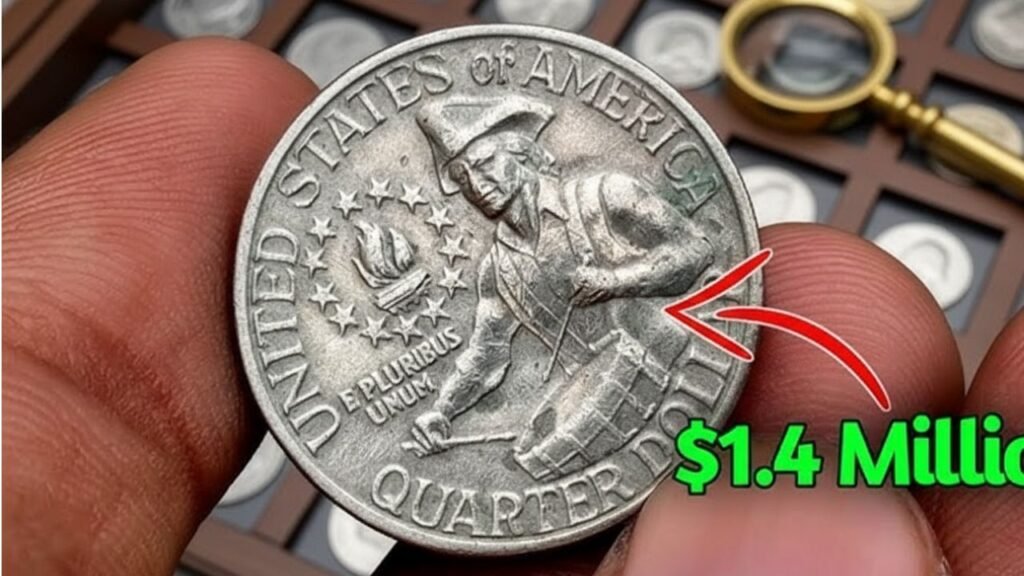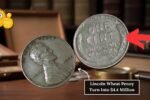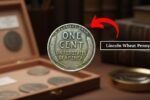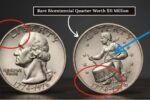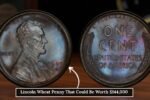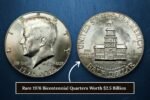Sometimes, what seems like ordinary spare change can turn into a remarkable find. That’s exactly what happened when a rare 1976 Bicentennial Quarter, struck with a minting error, was discovered at an estate sale and later appraised at over $1.4 million by collectors. Here’s what makes this coin so extraordinary and how to check if you might own one.
The History of the Bicentennial Quarter
In 1976, the U.S. Mint issued a special commemorative quarter to honor America’s 200th anniversary. The reverse featured a colonial drummer and a torch, surrounded by 13 stars representing the original colonies, replacing the traditional eagle design. The obverse retained George Washington’s portrait, updated with the dual date 1776–1976. Millions were minted for circulation, making standard Bicentennial quarters common today.
Yet, a small number of these coins were struck with unusual metal compositions or errors, making them highly valuable to collectors.
Why This $1.4 Million Quarter Is Special
The coin that fetched a $1.4 million valuation is believed to be a rare mint error, combining historical significance, unusual metal, and a production flaw. Experts suggest it may have been accidentally struck on a 90% silver planchet, which was not intended for standard circulation Bicentennial quarters.
Additional error types that can boost a coin’s value include:
| Error Type | Description | Potential Value |
|---|---|---|
| Double Die Strike | Letters or images appear doubled due to die misalignment | $1,000–$5,000 |
| Off-Center Strike | The design is noticeably shifted to one side | $500–several thousand |
| Wrong Metal Composition | Struck on silver or experimental alloys instead of copper-nickel | Varies widely, potentially hundreds of thousands |
| Proof Coin Error | Proof coins accidentally released into circulation | Up to $10–$20 for common varieties; rare errors can fetch more |
These mint mistakes are exceptionally rare, sometimes with only one or two known examples.
How the Coin Was Discovered
The rare quarter surfaced at an estate sale, where a collector noticed its unusual color and details compared to ordinary quarters. Numismatic experts confirmed its unique metal composition and mint error, drastically increasing its value.
How to Identify a Rare 1976 Bicentennial Quarter
Here’s a simple checklist for spotting a potential rare Bicentennial quarter:
| Step | What to Check |
|---|---|
| Edge | Standard quarters have a copper-colored edge. A solid silver edge may indicate a rare composition. |
| Mint Mark | Look for “S” (San Francisco) proof coins; some contain unique errors. |
| Weight | Normal quarters weigh 5.67g; silver planchet versions are around 6.25g. |
| Errors | Look for double images, off-center strikes, or unusual inscriptions. |
| Verification | Always have the coin authenticated by grading services like PCGS or NGC before assigning value. |
Other Valuable 1976 Bicentennial Quarters
While most 1976 quarters remain worth face value, certain varieties have commanded notable prices:
| Type | Estimated Value |
|---|---|
| Silver Proof Quarters (San Francisco Mint) | $10–$20 |
| Double Die Error Quarters | $1,000–$5,000 |
| Off-Center or Clipped Planchet Errors | $500–several thousand |
Conclusion
The $1.4 million Bicentennial Quarter proves that hidden treasures can still appear in everyday places, from pockets to old coin collections. If you have a 1976 quarter tucked away, it’s worth examining closely. That ordinary coin could be a historic mint error with extraordinary value.
FAQs
How rare is a 1976 Bicentennial Quarter mint error?
Extremely rare; some errors may have only one or two known examples.
Can any 1976 quarter be worth $1 million?
No, only coins with unique errors or unusual metal compositions reach such high values.
How do I check the weight of my quarter accurately?
Use a precise digital scale; standard quarters weigh 5.67g, while silver planchet errors weigh around 6.25g.
Where can I get my coin authenticated?
Professional grading services like PCGS and NGC are the most trusted for verification.
Are all San Francisco (S) mint quarters valuable?
Not all; only proof coins or those with errors have significant collector value.
